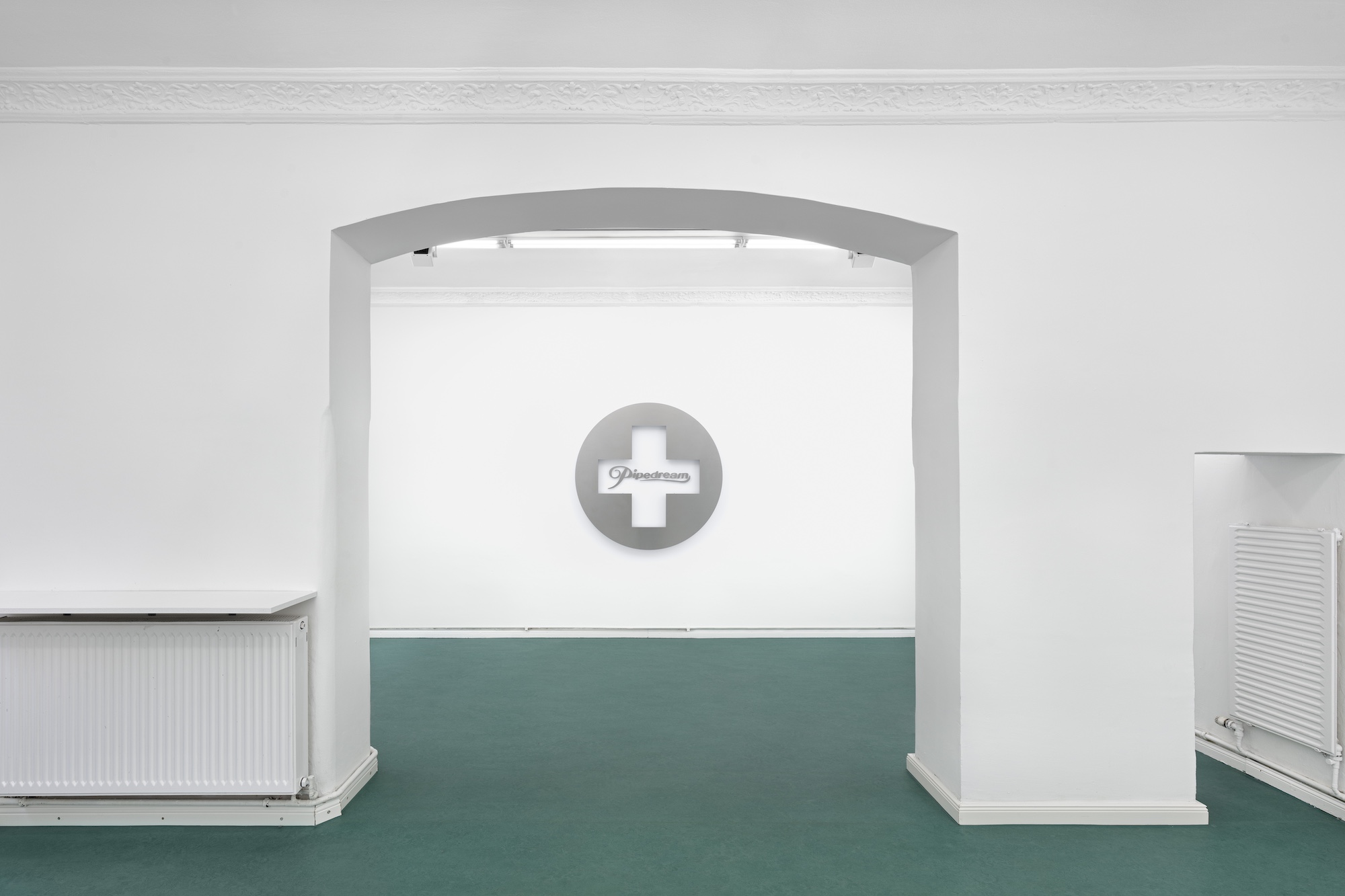In her solo show at Noah Klink, Berlin, the artist hones in on the ways labour is made invisible
In a contemporary reality dominated by surveillance, our virtual shopping arcades and social platforms – Amazon, X, Meta – appear in disguise as environments of freedom, perpetuating the illusion of choice by (and for) consumerism. Contrastingly, institutions such as prisons, psychiatric hospitals and nursing homes still adhere to hierarchical notions of discipline, rendering bodies docile through physical control. Racheal Crowther’s exhibition Gebrauchsmusik (or ‘Utility Music’) uses minimal means to capture the paradoxical duality of these spaces. It does so by confronting branded imagery with traces of unnoticed labour, acoustically captured and broadcast through a set of vintage tech gear. Under this guise, the fetishistic aesthetics of the techno-corporate world underscore an ambiguous divide between the controllers and the controlled.
In one room, the Dublin-born artist places Close Call Only (10783, DE) (all works 2025). Here, a screen and a Whistler TRX-2 radio scanner are encased, respectively, in a security vitrine and a metal cage. The scanner broadcasts the live voices of security guards, taxi drivers, couriers and construction workers captured by an antenna on the gallery’s rooftop. Two CCTV cameras, in turn, monitor the antenna. The intercepted sounds, silences and stillness, as well as its monitored imagery, are changing and unpredictable. Crowther, pointedly, relinquishes control, in the process pulling reality outside into the white cube and its very particular audience.

of the antenna on the roof), antiligature TV cabinet, Whistler TRX-2 radio scanner,
security cage, Diamond D-777 antenna, radio frequencies, military spec coax cable,
CCTV camera (facing antenna), dimensions variable. Courtesy the artist
On the wall in a second room, Pipedream® is a large laser-cut metal logo of a medical cross, within which is the titular ‘Pipedream’ – its scrolled, brand name-like typography appropriated from a sex-shop nurse’s costume. Crowther’s formal gesture points towards the hollowness of nurse-fetish fantasies, contrasting them with the harsh circumstances that real nurses might face. The sleek appearance of the corporate often hides how their profitable economies are based on systematic neglect of human beings, without whom these systems would not function.
The sound of these ignored activities and obscured sectors of the working world is, to turn to the exhibition title, an accidental form of gebrauchsmusik – both metaphorical and literal. Written about critically by Theodor Adorno, gebrauchsmusik came to be viewed as a term of insult to describe utilitarian, soundtracklike music – composition as commodity rather than art. Musicologist Heinrich Besseler, though, acknowledged the value of the genre for human experience by bringing people together. The background rumble of our fractious present moment, certainly in a city like Berlin, might be, first, that of strikes due to unfair labour conditions, and secondly, more loudly, racist slogans at rising volume. Crowther’s show suggests the dissonance between dependence and neglect in the ‘gebrauchskakofonie’ of our times.
Yet, whether the nurses and clerks that the display calls to mind are surveillers or surveilled remains unclear. Furthermore, are artists – seemingly her main audience – included in this group of neglected practitioners? The exploitative, though romanticised, structures of the artworld doom most of its makers to engage with day jobs in various sectors including healthcare, seemingly merging these two worlds. As a former care worker herself, Crowther makes these realities visible in this show, wherein everything – even labour – exists as a fetishised, commodified entity.
Gebrauchsmusik at Noah Klink, Berlin, 24 January – 1 March
From the April 2025 issue of ArtReview – get your copy.
